Wood is a beautiful, natural material that adds warmth and character to any home. However, wood surfaces can easily become stained by grease, especially in kitchens and dining areas where spills and splatters are common.
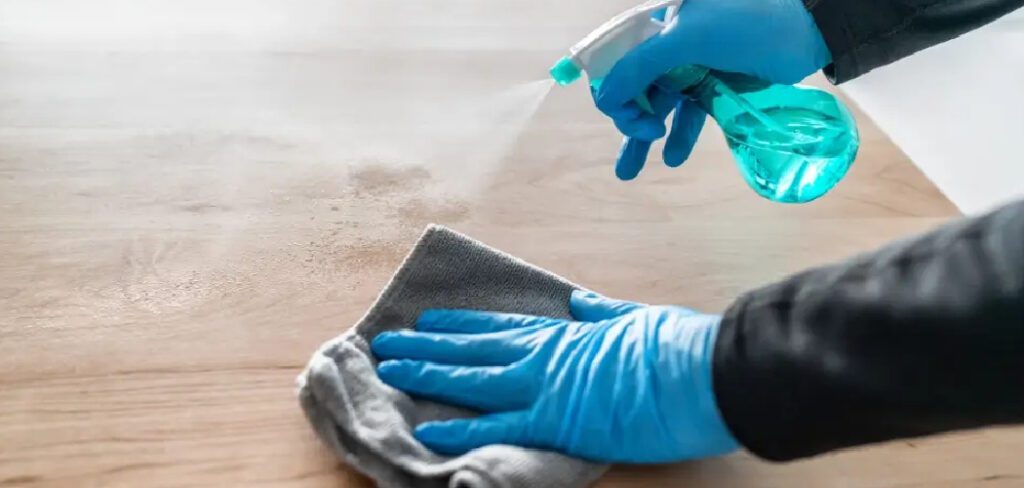
Cleaning grease from wood can be challenging, as using the wrong approach may cause damage to the finish or wood grain. This guide on how to remove grease from wood aims to show you how to safely remove grease from wood, restoring its original appearance while protecting its surface.
Understanding the Problem
Grease stains on wood aren’t just unsightly—they can also penetrate the wood’s surface and become stubborn over time. Unlike some other materials, wood is porous, which means it can absorb oils and grease deep below the surface. This makes ordinary cleaning methods less effective and sometimes even risky, as harsh chemicals may ruin the finish or discolor the wood.
Additionally, different types of wood and finishes may react differently to cleaning solutions. What works for one piece of furniture or flooring might not work for another. This is why understanding the type of wood and the finish used is essential before proceeding with any grease removal method.
Being cautious also helps preserve the integrity of your wooden surfaces. With the right approach, you can remove grease without leaving lasting marks or causing warping. It’s important to act as soon as you notice a grease spot to prevent long-term staining.
Tools and Materials You’ll Need:
- Soft Microfiber Cloths
- Mild Dish Soap
- Warm Water
- Baking Soda
- Vinegar (Optional, for Tough Stains)
- Soft-bristled Brush or Old Toothbrush
- Mineral Spirits (for Stubborn Grease)
- Wood Polish or Conditioner
- Small Bowl or Container
- A Dry Towel
8 Simple Step-By-Step Guidelines on How to Remove Grease From Wood
Step 1: Assess the Grease Stain
Begin by closely inspecting the grease stain. Determine the size and severity of the stain as well as the type of wood and finish. This will help you choose the safest and most effective cleaning method for your specific situation.
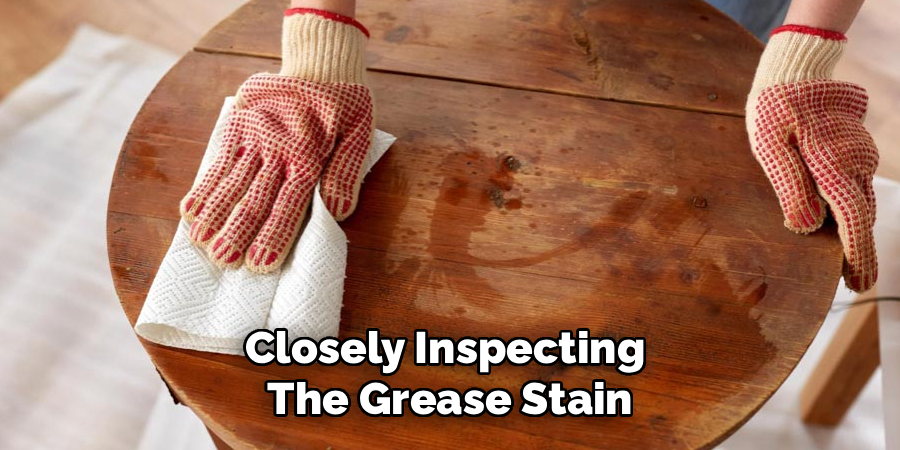
If you’re unsure about the finish, test a small inconspicuous area first. This precaution helps ensure that your cleaning solution won’t cause additional damage or discoloration to your wood.
Step 2: Blot Excess Grease
If the grease is fresh, use a soft, dry microfiber cloth to blot up as much as possible. Press down gently—avoid rubbing, which can push the grease further into the wood grain.
After blotting, let the area sit for a few minutes to see if any more grease seeps up to the surface. Repeat blotting if needed before moving to a more intensive cleaning solution.
Step 3: Prepare a Gentle Cleaning Solution
Mix a few drops of mild dish soap in a small bowl of warm water. Stir to create a sudsy solution that is safe on most wood finishes and effective at breaking down grease.
Dip a clean microfiber cloth into the solution, wring out excess water, and prepare to gently treat the stained area. Avoid soaking the cloth to prevent water damage to the wood.
Step 4: Wipe the Stained Area
Gently wipe the grease stain with your soapy cloth, working in the direction of the wood grain. Apply even, light pressure to avoid scratching or lifting the finish.
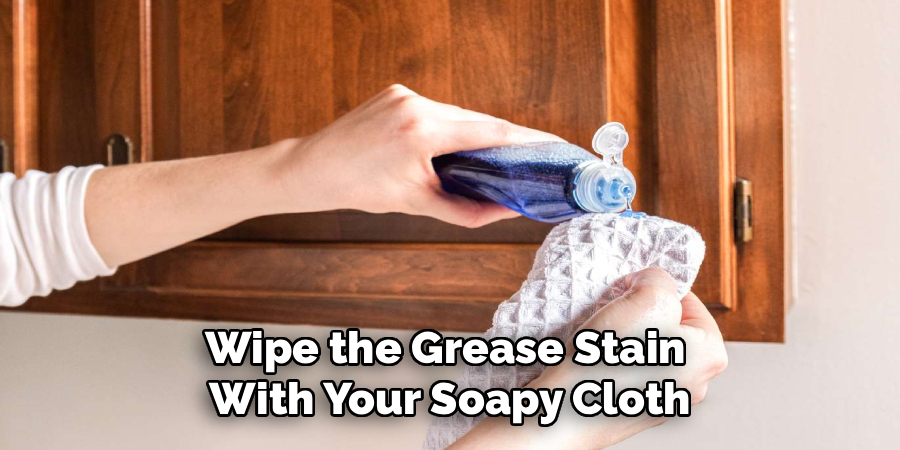
After several passes, rinse the cloth, wring it out, and wipe again to remove any lingering grease and soap residue. Always keep the area as dry as possible throughout the process.
Step 5: Tackle Stubborn Stains with Baking Soda
For stains that don’t respond to mild soap, sprinkle a small amount of baking soda directly on the area. Add a few drops of water to make a paste.
Let the paste sit for a few minutes, then use a soft-bristled brush to gently scrub in the direction of the grain. Baking soda is a mild abrasive and effective at lifting grease without harming most wood finishes.
Step 6: Try Vinegar for Tough Grease Spots
If baking soda alone isn’t effective, mix equal parts vinegar and water. Dampen a cloth with the solution and carefully wipe the stained spot. Vinegar can help break down tougher grease, but always test it on a hidden area first.
Remember to follow up by wiping a clean, damp cloth over the area to remove any vinegar residue and quickly dry the wood afterward to avoid moisture damage.
Step 7: Use Mineral Spirits for Persistent Stains
For grease stains that persist after previous steps, apply a small amount of mineral spirits to a cloth. Gently blot the affected area—do not soak the wood.
Work in small sections and ventilate the area properly. When finished, wipe the spot with a clean, dry towel and leave the area to air out. Avoid overuse, as mineral spirits are strong and may affect the finish if used excessively.
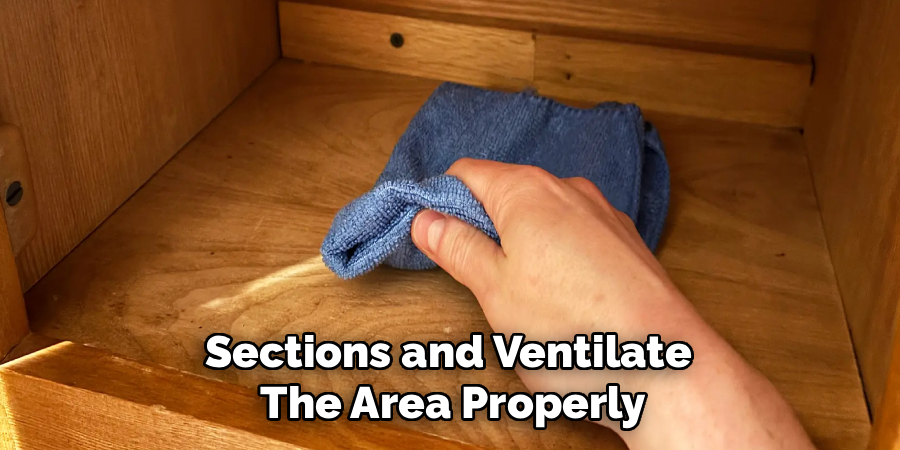
Step 8: Restore and Condition the Wood
Once the grease is removed, apply a quality wood polish or conditioner to the cleaned area. This helps protect and nourish the wood, restoring shine and luster lost during cleaning.
Use a soft cloth to apply the polish, buffing in a circular motion. Allow the conditioner to absorb and buff again for a uniform finish. Your wood should look refreshed and be protected against future spills.
Following these steps on how to remove grease from wood can help maintain the beauty and lifespan of your furniture, cabinets, or floors. By being proactive and using gentle cleaning methods, you can prevent damage and keep your wood looking its best for years to come.
Tips and Precautions
- Always test any cleaning solution on an inconspicuous area before applying it to the stain.
- Avoid using excessive water, as moisture can cause wood to warp, swell, or crack.
- Never use abrasive pads or harsh chemicals not intended for wood, as they may scratch or discolor the surface.
- Be patient and use gentle motions; forcing the process can make stains worse or damage the finish further.
- After cleaning, ensure the wood is thoroughly dried to prevent mold, mildew, or additional staining.
Preventing Future Grease Stains
To reduce the risk of future grease stains, clean up spills immediately and use coasters, placemats, or protective tablecloths in eating areas. Regularly dust and polish your wood surfaces to maintain their finish.
Consider applying a protective sealant to high-traffic areas for extra defense. With a bit of foresight, you can keep your wood looking beautiful and clean.
When to Call a Professional?
If you’ve tried several gentle methods and the grease stain remains, or if the wood appears warped, discolored, or damaged, it may be time to consult a professional. Experts have specialized tools and finishes to treat deep or complex stains without harming the wood. Additionally, antiques and valuable pieces should always be handled by experts to avoid accidental damage.
Professional cleaners can also help if large areas are affected or if previous DIY attempts have worsened the problem. Don’t hesitate to seek help when in doubt, as sometimes a professional touch is the safest and most cost-effective solution in the long run.
Frequently Asked Questions
Q1: Can I Use Commercial Degreasers on Wood?
A1: While some commercial degreasers are marketed as safe for wood, many contain harsh chemicals that may damage the finish or wood fibres. Always check the manufacturer’s recommendations and test the product on a small, inconspicuous spot first. When in doubt, stick to mild dish soap and natural solutions, which are less likely to cause harm.
Q2: What Should I Avoid When Cleaning Grease From Wood?
A2: Avoid using steel wool, scouring pads, or harsh chemicals like bleach, which can scratch, dull, or discolor the wood. Excessive moisture is another risk, as water can seep into the wood and cause swelling or warping. It’s best to use soft cloths, gentle solutions, and minimal liquid for effective and safe cleaning.
Q3: How Do I Maintain Wood After Removing Grease?
A3: After successful cleaning, it’s important to restore and protect the wood’s finish. Apply a suitable wood conditioner or polish to nourish the wood and guard against future stains. Regular maintenance—such as dusting and occasional polishing—will help keep your wood surfaces looking vibrant and resilient.
Q4: Can Old Grease Stains Be Removed Completely?
A4: Removing old, set-in grease stains is more challenging, but not always impossible. Patience and the right methods usually lighten most stains significantly. In severe cases, professional refinishing or restoration may be necessary to fully remove the mark and restore the wood’s original appearance.
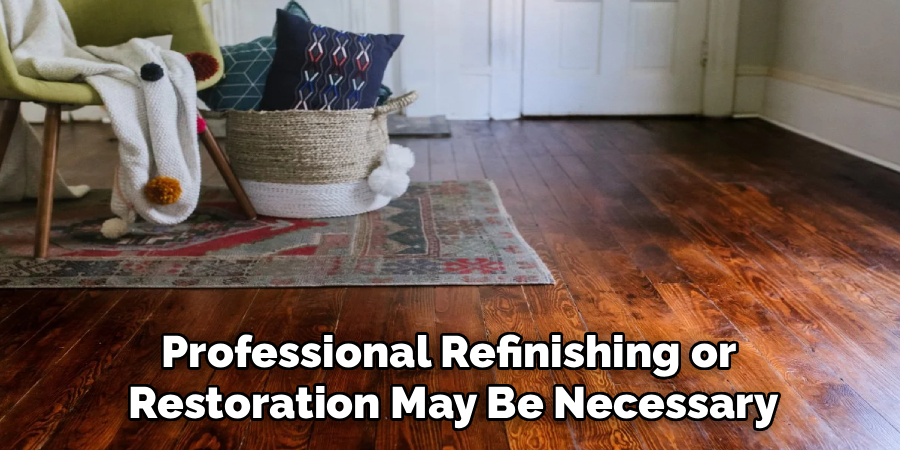
Conclusion
Removing grease from wood surfaces doesn’t have to be daunting if you approach the task with care, the right tools, and patience. By following these step-by-step methods on how to remove grease from wood, you can tackle even stubborn grease stains while protecting your wood’s beauty and integrity.
With regular maintenance, precautions, and awareness, your wood surfaces will remain clean, inviting, and ready to stand the test of time.
About
Team Woodlix is a distinguished figure in the world of Diy design, with a decade of expertise creating innovative and sustainable Diy solutions. His professional focus lies in merging traditional craftsmanship with modern manufacturing techniques, fostering designs that are both practical and environmentally conscious. As the author of diy, Woodlix delves into the art and science of furniture-making, inspiring artisans and industry professionals alike.
Education RMIT University
(Melbourne, Australia) Associate Degree in Design (Team Woodlix) Focus on sustainable design, industry-driven projects, and practical craftsmanship. Gained hands-on experience with traditional and digital manufacturing tools, such as CAD and CNC software.
Nottingham Trent University
(United Kingdom) Bachelor’s in diyfastly.com and Product Design (Honors) Specialized in product design with a focus on blending creativity with production techniques. Participated in industry projects, working with companies like John Lewis and Vitsoe to gain real-world insights.
Publications and Impact
In diy, Team Woodlix his insights on indoor design processes, materials, and strategies for efficient production. His writing bridges the gap between artisan knowledge and modern industry needs, making it a must-read for both budding designers and seasoned professionals.
